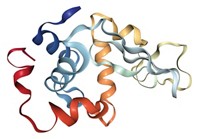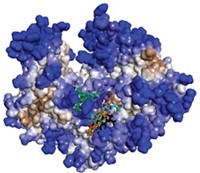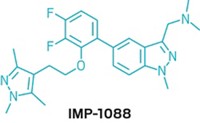Advertisement
Grab your lab coat. Let's get started
Welcome!
Welcome!
Create an account below to get 6 C&EN articles per month, receive newsletters and more - all free.
It seems this is your first time logging in online. Please enter the following information to continue.
As an ACS member you automatically get access to this site. All we need is few more details to create your reading experience.
Not you? Sign in with a different account.
Not you? Sign in with a different account.
ERROR 1
ERROR 1
ERROR 2
ERROR 2
ERROR 2
ERROR 2
ERROR 2
Password and Confirm password must match.
If you have an ACS member number, please enter it here so we can link this account to your membership. (optional)
ERROR 2
ACS values your privacy. By submitting your information, you are gaining access to C&EN and subscribing to our weekly newsletter. We use the information you provide to make your reading experience better, and we will never sell your data to third party members.
Biological Chemistry
New Molecular Way To Combat The Flu
Microbiologists uncover a new protein target and a small molecule that inhibits the protein
by David Pittman
June 7, 2010
| A version of this story appeared in
Volume 88, Issue 23
Hong Kong microbiologists have uncovered a new protein target for treating influenza A, along with a small molecule that prevents viral replication by blocking the protein (Nat. Biotechnol., DOI: 10.1038/nbt.1638). Richard Y. Kao of the University of Hong Kong and coworkers used a forward chemical genetics approach to identify influenza A nucleoprotein as a drug target. The researchers then screened a library of more than 50,000 compounds, taking a closer look at molecules that were effective at preventing degenerative changes in cells caused by nucleoprotein and at how well molecules blocked accumulation of nucleoprotein in the nucleus of cells. They zeroed in on one compound, nucleozin, for further study because of its promising antiviral activity and optimal solubility. Kao’s team showed that nucleozin is effective against H1N1, H3N2, and H5N1 flu strains. The compound worked in cell culture and in mice, with nucleozin-treated animals showing a 10-fold reduction of viral load in the lungs compared with untreated animals. Finding new forms of treatment for the flu is important, the researchers point out, especially as more virulent strains emerge or as viruses develop resistance to current therapies, such as Tamiflu, a small-molecule drug that also interferes with viral replication.





Join the conversation
Contact the reporter
Submit a Letter to the Editor for publication
Engage with us on Twitter